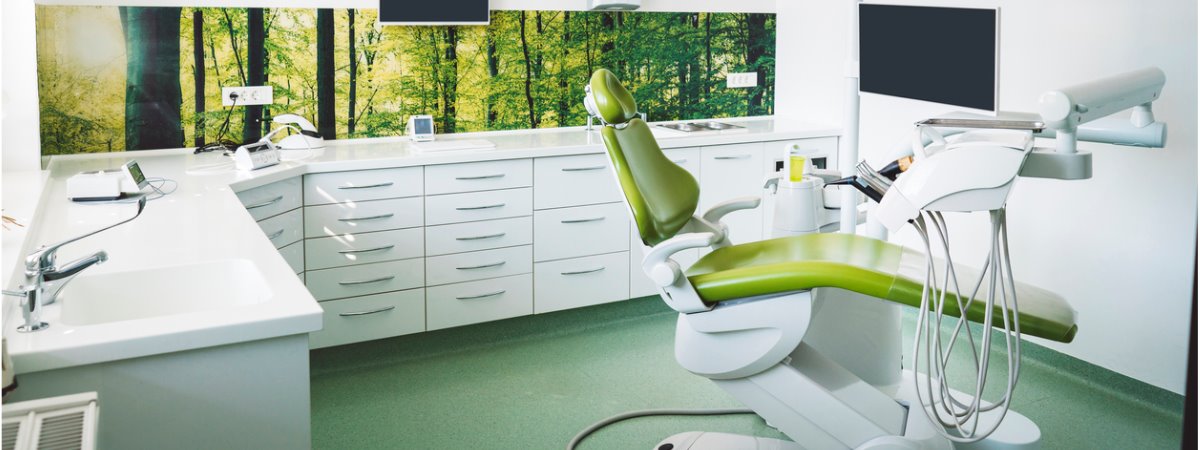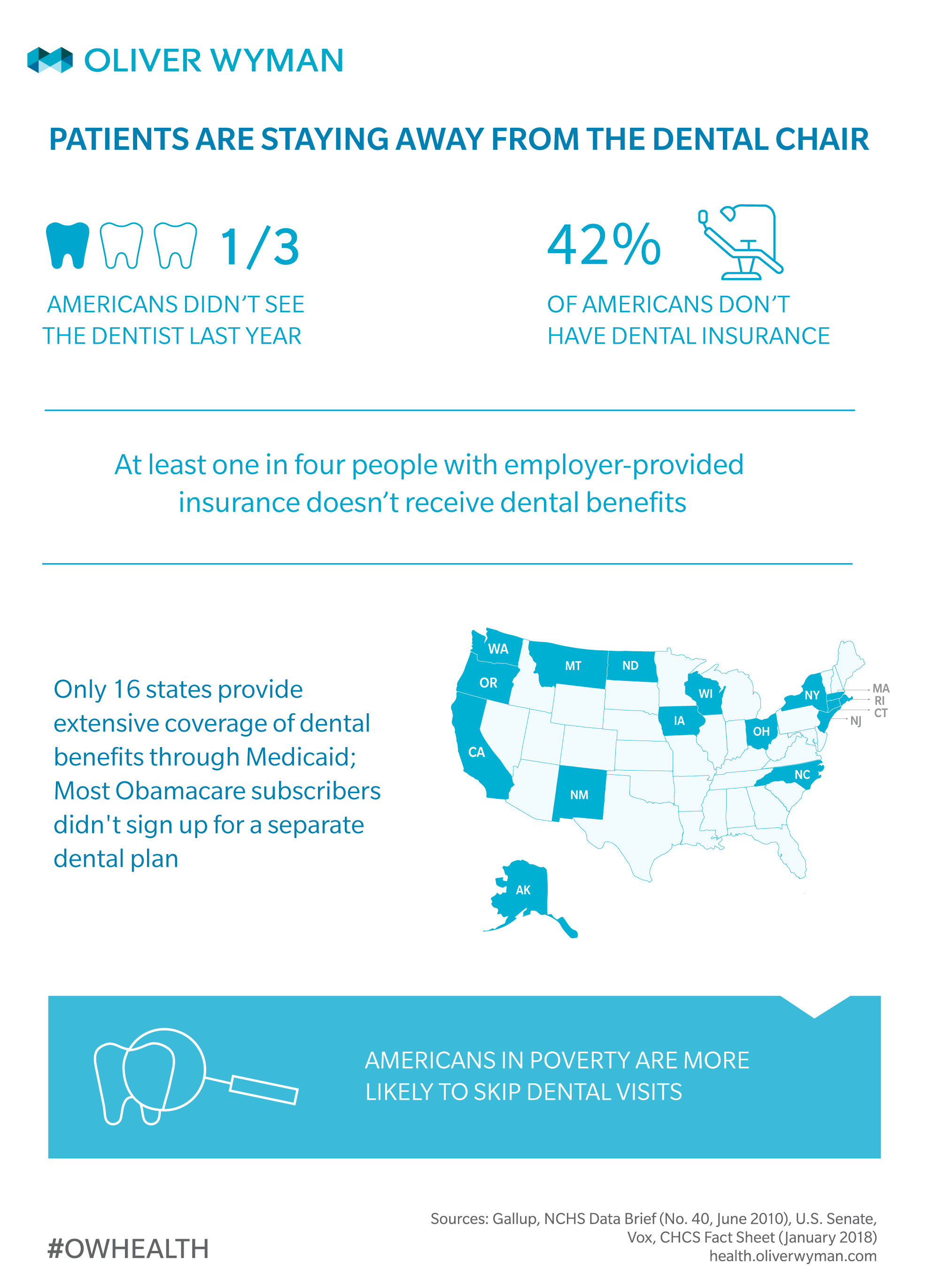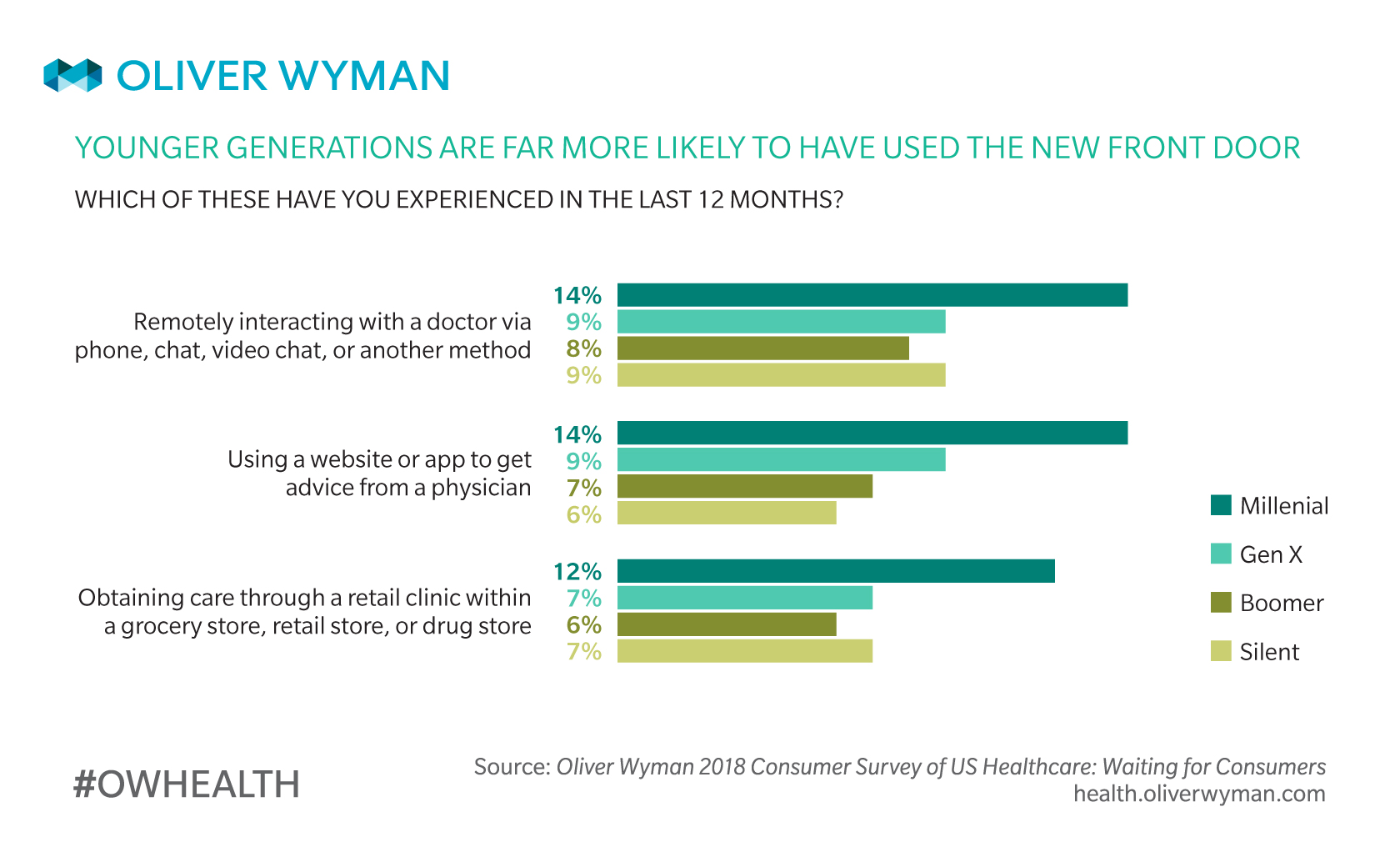When preventive dental services become a consumer-friendly, accessible convenience – instead of a stigma-laden task akin to pulling teeth – more people will get the necessary dental care they need more often. Something to smile about? Technology, basic services, and mid-level practitioners can make dental care more accessible and affordable for the average person – taking preventative dental care from a segregated concept to a part of a patient’s holistic medical journey (something that happens at clinics, in the emergency room, at home, and beyond). New emerging dental care models have great potential to become convenient care solutions in dentistry and help eradicate patients’ most common barriers to receiving the dental care they want and need.
We’ve already seen the explosion of the “new front door” in healthcare, where many models have successfully lowered total care costs while providing a consumer-centric, valued experience. Patients can now manage their primary care, chronic conditions, and behavioral health through telemedicine, urgent care, retail clinics, and even at home or at work through in-person visits and remote monitoring.
Why can’t dental care also have its own “new front door?” One where ease and convenience drives better access – resulting in consumer action, rather than apathy? To quote the Red Sox when they won the World Series for the first time in 86 years, “Why not us?”
Case in point: when walking through the Minneapolis airport, almost every good or service is right at your fingertips – food from France to Mexico, goods from luxury bubble bath to athleisure apparel, services like shoe shining, flu shots, a virtual driving range in Terminal 1, seaweed wrap massages, or even pre-flight hourly rental of a conference room for 100. So why not spend, say, 20 minutes getting your teeth cleaned and doing a quick scan for periodontal disease or oral cancer before your board your flight? That’s convenient, preventative care. (And, hey, no bad breath for your seatmate to endure!)
Let’s take it a step further for a farmer living on a Wyoming ranch – what if she just snaps a picture of her mouth with the help of an app to quickly identify a potential issue instead of driving 75 miles to the nearest dentist? What if her preventative check-up is with a mid-level dental practitioner and instead takes place at the same office at the same time she receives her annual medical physical? It’s a 25-mile drive, but she gets a physical, cleaning and oral screening all at once. And in the interim between appointments, what if another app on her toothbrush helps her continuously monitor her brushing and assess her potential for developing gum disease? Unfortunately, dental care for many patients just like this Wyoming farmer is more “what if” than “what is” today, even though the capabilities to bridge the gap largely exist.
Making Prevention in Dental Care the Norm, Not the Exception
Poor oral health can significantly impact overall health – even serving as the primary cause of patients’ high emergency room bills. Health plan members diagnosed with dental and gum conditions are 25 percent more likely to suffer from heart disease, twice as likely to visit the emergency room or hospital, and spend on average two times more annually on overall healthcare costs. Proper oral care for the body’s “gateway” is a compelling value proposition to both consumers and the healthcare ecosystem.
"[More] than a million people a year go to emergency rooms with dental problems. Not like they’ve had a car accident, but like a toothache or some kind of problem you could treat in a dental office. It costs the system more than a billion dollars a year for these visits. And the patients very seldom get the kind of dental care they need for their underlying dental problems because dentists don’t work in emergency rooms very often. The patient gets maybe a prescription for an antibiotic and a pain medicine and is told to go visit his or her dentist. But a lot of these patients don’t have dentists.”
Different access points could help close the dental care gap and turn health issues into preventive opportunities. Oral and medical care aren’t generally integrated today (there are exceptions, of course, that have shown promising results).
Promoting and establishing “new front doors” for dental care can democratize and normalize dental care and provide organic integration points with primary preventative medical care. It can also create greater consumer-driven care standards (think Yelp, but for oral hygienists). The badly fragmented system lacks provider brands that can deliver, and are held accountable, to proper oral care delivery standards. As a harrowing example, an investigation from an individual who visited 50 dentists across 28 states resulted in diagnoses ranging from a $500 crown to $30,000 mouth reconstruction.
More Demand for New Care Delivery Options is on the Horizon. But Who’s Knocking on the “New Front Door” the Loudest?
According to Oliver Wyman’s 2018 Consumer Survey of US Healthcare, generational differences may be the defining factor for what tomorrow’s general care delivery system looks like. Younger generations are far more likely to have used healthcare’s overarching greater “new front door” compared to older generations. Most patients who say they’ve remotely interacted with a doctor, used a web or app to get advice from a doctor, or obtained care from a retail clinic within the past year are Millennials. What are the greater implications of this finding? Well, those younger generations entering into the workforce – soon to become the largest percentage of the workforce, no less – generally prefer to use an alternate channel for care, and purchase benefits reflecting this choice. Forty-seven percent of Millennials are interested in new kinds of healthcare services, compared to Boomers, who tend to be least interested in such services, perhaps due to rising cost concerns. Whereas Boomers tend to be satisfied with their status quo healthcare experiences, Millennials demand both high-tech, high-touch offerings, and unlike older generations, demand a system that listens and invents care around consumers’ needs and wants. More demand for not only medical, but dental, “new front doors” of care delivery are on the horizon.
But Will These “New Front Doors” Disrupt Today’s Dental Practice Model?
Yes! And that’s a good thing. Recent surveys suggest up to 61 percent of people are apprehensive about seeing the dentist, 15 percent of which are so anxious, they avoid the dentist almost entirely. By making it easier and more convenient to see an oral hygienist, in a setting more comfortable for consumers (including integrating dental care in primary medical care facilities), some of that anxiety will surely be erased.
The “new front door” for dental care can provide more access points, more integration, more mid-level providers providing basic preventative dentistry, and more affordable, competitive alternatives to the dental office. Other “front doors” could also include “dental tourism.” For example, one dentist practicing in Mexico sees mostly Americans patients hailing from Texas, Florida, and Colorado. With dental implants costing just $549 (versus $1,500 in the US), her business is booming. Crowns and bridges are also a third of the price.
So…Why Not Dental?
Why haven’t these new front door access points exploded? A few reasons. First, dentists graduating with over $300,000 to 400,000 in debt aren’t eager to cede revenue from the traditional practices they buy into. Second, independence give them more freedom to be, well, more “robust” or “expansive” in their diagnoses and treatment plans. Third, dentists are a small, fragmented market. Last, unlike the medical realm where big systems drive integration at scale, dentists don’t typically have scale or incentive to change their practice methods and invest in “new front door” access points.
But competition, transparency, more affordable preventative options, integration into health plans, adherence to evidence-based protocols all signal change to the status quo and threaten the current business model. New players will fill the void with new front door solutions. Integrated medical plans will promote medical-dental coordination as a competitive edge. Regulators will allow it because it’s right for the consumer and will lead to better outcomes. Preventative dental care that’s available when and where consumers are is the new future. And this future’s already here. We just have to open the door, and keep it open.



